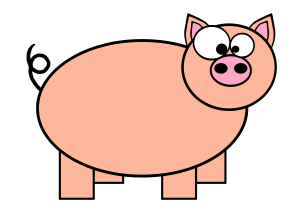
The History of The Little Piggy Song
What are the words to this little piggy first known appearance was its first rhyming line in a medley, “The Nurse’s Song” in 1728. The first publication occurred in 1760 in London in The Famous Tommy Thumb’s Little Storybook. And throughout the late 18th to the early 19th century, the total rhyme continued, but there were slight variations among different collections. It was until the middle of the 20th century when the lyrics referred to “little pigs”. Also, a painting was done of the little piggy going to market in 1857 by Lilly Martin Spencer using oil on cut arched board.
Educational Aspects of this Nursury Rhyme
This melody is more than a nice, catchy, and fun rhyme. Parents and teachers can teach children when they sing with them. With this rhyme, your young child will develop various fine motor skills, cognitive skills, and language development with the use of words, rhyming, and fingerplay. For instance, while singing the verse, this little piggy went to the market, the child is taught to wiggle the big toe. For the second verse, this little piggy stayed home, the wiggling of the long toe is done, and so forth. Also, with these lyrics, your child’s vocabulary will be boosted. Thus, this is a lot more than a cute, loving, and fun melody- it’s very educational for your young child, ages 0 to 5 years old.
Other Educational Aspects
When it comes to nursery rhymes, the repetitive and predictive language also establishes a routine of social language in which preschoolers and toddlers can learn and a math concept is introduced to them. As kids keep participating in this rhyme, they will become comfortable with group singing, joint attention, and taking turns. Additionally, a one-on-one correspondence is the math concept that’s introduced by counting items and touching each item that is counted.
Theme of This Little Pig
The theme of this nursery rhyme includes the child learning about the market, roast beef, and other important aspects of life. Not only is this a good melody to enjoy with your child and bond with him/her, but this melody can assist in developing various skills within the child.
Conclusion
First appearing in 1728 and then it is published in 1760, This Little Piggy is an all-time, nursery rhyme favorite. Many of us can relate the fun and love we felt as a child when our parents/grandparents sung this nursery rhyme to us. And now that we are parents, grandparents, and/or teachers, we can pass on this very favorable tradition especially when knowing all the benefits and themes of this all-time favorite. With the benefits of social language, math concept, group singing, joint attention, language development, and the developing of fine motor and cognitive skills in addition to the fun and bonding, what more can you ask for?